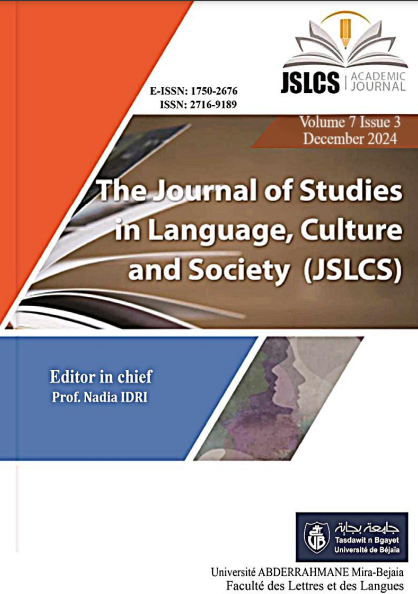Deixis and Indexicals As Meaning Making Devices in Selected Spoken and Written Texts
Keywords:
Deixis, Indexicals, Meaning-making, Communication, linguistic, indexicality, Written and spoken texts Non-nativeAbstract
Human beings are social animals and communicate their needs through various linguistic symbols. They use deistic expressions to manipulate meaning based on their different experiences. This paper aims to show how deixis contributes to constructing the meaning and dynamics of utterances in communication. It attempts to foreground and contextualise deixis and indexicals as prominent linguistic components that establish meaning in social interactions or relationships in all communication exchanges. The paper collected data from selected spoken and written expressions in literary texts, daily newspapers, bible excerpts and casual expressions, focusing on how deictic expressions were used in different situations to express locations, time, attitude, positions, status and others. Through the analysis, it was discovered that deixis and indexicals are vitals in social engagements as they help to interpret the meaning and also showed that meaning extends beyond the traditional grammar with context as the core in interpreting grammatical structures. The paper concludes that since deixis and indexicals are daily linguistic items that language users integrate into their communication patterns, their knowledge is essential to understanding human language.
References
Allot, N. (2010). Keyterms in pragmatics. Continuum International Publishing.
Cruise, D. A. (2000). Meaning in language: An introduction to semantics and pragmatics. Oxford University Press.
Dylgjeri, A., & Kazazi, L. (2013). Deixis in modern linguistics and outside. Academic Journal of Interdisciplinary Studies, 2(4), 45–50.
Fillmore, C. J. (1977). Lectures on deixis. CSLI Publications.
Grundy, P. (2008). Doing pragmatics (3rd ed.). Hodder Education. Huang, Y. (2007). Pragmatics. Oxford University Press. King James Bible. (2017). King James Bible online. https://www.kingjamesbibleonline.org/
Levinson, S. C. (1983). Pragmatics. Cambridge University Press.
Levinson, S. C. (2004). Deixis and pragmatics. In L. R. Horn & G. Ward (Eds.), Thehandbook of pragmatics (pp. 97–121). Blackwell Publishing.
Lyons, J. (1977). Semantics. Cambridge University Press.
Maspufah. (2015). Students’ competence in interpreting deixis in narrative text at GradeXIIPA 1 students of SMA Dharma Loka Pekanbaru. Journal of English Language Teaching (ELT, 1(1), 45–50. http://ejournal.unp.ac.id/index.php/elt/article/view/4621
Mey, J. L. (2001). Pragmatics: An introduction (2nd ed.). Blackwell Publishing.
Obadiah, M. (2020, September 2). Post-coronavirus global economy and international order. The Punch. https://www.punch.com
Ousted Mali president hospitalized after 10 days of detention. (2020, September 2). ThePunch. https://www.punch.com
Peirce, C. S. (1977). Semiotics and signifies. Indiana University Press.
Seis, Z. (2022). Language awareness of the English language learners about deixis inEnglishlanguage teaching. Akdeniz Havzasi ve Afrika Medeniyetleri Dergisi, 4(2), 109–118. https://doi.org/10.54132/akaf.1146893
Soyinka, W. (1963). The lion and the jewel. Oxford University Press.
Williams, N. (2019). Deixis; Deixis and indexicals. ResearchGate. https://www.researchgate.net/publication/332079373
Yule, G. (1996). Pragmatics. Oxford University Press.
Downloads
Published
How to Cite
Issue
Section
License
Copyright (c) 2024 Temitope Abiodun Balogun

This work is licensed under a Creative Commons Attribution 4.0 International License.







